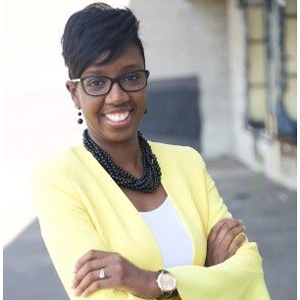Who We Are
We are the Minnesota Business Coalition for Racial Equity.

After the killing of George Floyd, we have seen what cannot be unseen. Systemic racism has taken a toll on Black Minnesotans for far too long. It’s time for the business community to do more to eliminate racial disparities because our state’s future depends on it.
Across a whole range of economic, education, and health measures, the gaps between Black Minnesotans and White Minnesotans are among the widest in the country. The twin forces of rising diversity amidst persistent exclusion from the economy form a core challenge that the business community must address to remain competitive.
At MBCRE, we are different. We are a collective impact organization working with the business community across the state of Minnesota. We believe that through our collective action, we can build an equitable, inclusive and prosperous state with and for Black residents.
We hope you will join us in these efforts.
How We Are Helping
We intend to apply our expertise, experience and resources in three pillars as we work to overcome systemic racism.


It is incumbent upon organizations committed to racial equity to challenge ourselves to reflect, empathize, act, and learn. We have developed actionable resources and made them easily accessible to organizations, diversity and inclusion practitioners and individual users alike. We developed the Allyship Toolkit as a learning space for our Coalition Members and others to deploy Ally programming within their organization in order to build a community of Allies committed to supporting Black Minnesotans.
Get Involved
Get involved, take action and help us eliminate systemic racism.
MBCRE Membership
The Minnesota Business Coalition for Racial Equity (MBCRE) is composed of members acting together to advance our principles. With a focus on businesses and large employers, we invite other organizations to join us to advance our mission.
Member Expectations
Members are committed to:
- Center Black Minnesotans in the work
- Participate fully in the work of at least one Pillar
- Follow the work across all Coalition Pillars
- Contribute financially to the development of the Coalition
- Inform leaders in your organization of Coalition work
- Take bold action to advance racial equity within your organization
- Share best practices and results with Coalition members
- Provide expertise and insight to advance racial equity
- Refrain from leveraging MBCRE for personal or business interests beyond the mission of the Coalition
Managing Director
Tiffani Daniels

MBCRE Steering Committee
Courtney Schroeder
Delphanie Daniels
Keisha Powell
Samuel Ndely
Shereese Turner
Toweya Brown Ochs
MBCRE Advisory Council
Our Members
3M
Best Buy
Blue Cross & Blue Shield of Minnesota
Bremer Bank
Carlson Companies
Children’s Minnesota
CHS Inc.
Delta Dental of MN
Element Fleet Management
Fairview Health Services
General Mills
Great Clips, Inc.
Land O’Lakes Inc.
McKnight Foundation
Minnesota Timberwolves/Lynx
Mortenson Construction
The Opus Group
Target
Thrivent
Twin Cities Habitat for Humanity
UnitedHealth Group
U.S.Bank
Winnebago Industries
News

Episode 89 Building Partnerships & Collective Action
Tiffani Daniels, as the Managing Director of the Minnesota Business Coalition for Racial Equity, exemplifies a dedication to service. With over a decade of experience in the Twin Cities, she has been instrumental in building brands and advocating for underrepresented groups. Known for her prowess in crafting consumer-centric strategies, Tiffani has consistently driven remarkable growth.
Listen.
Serve.
Act.